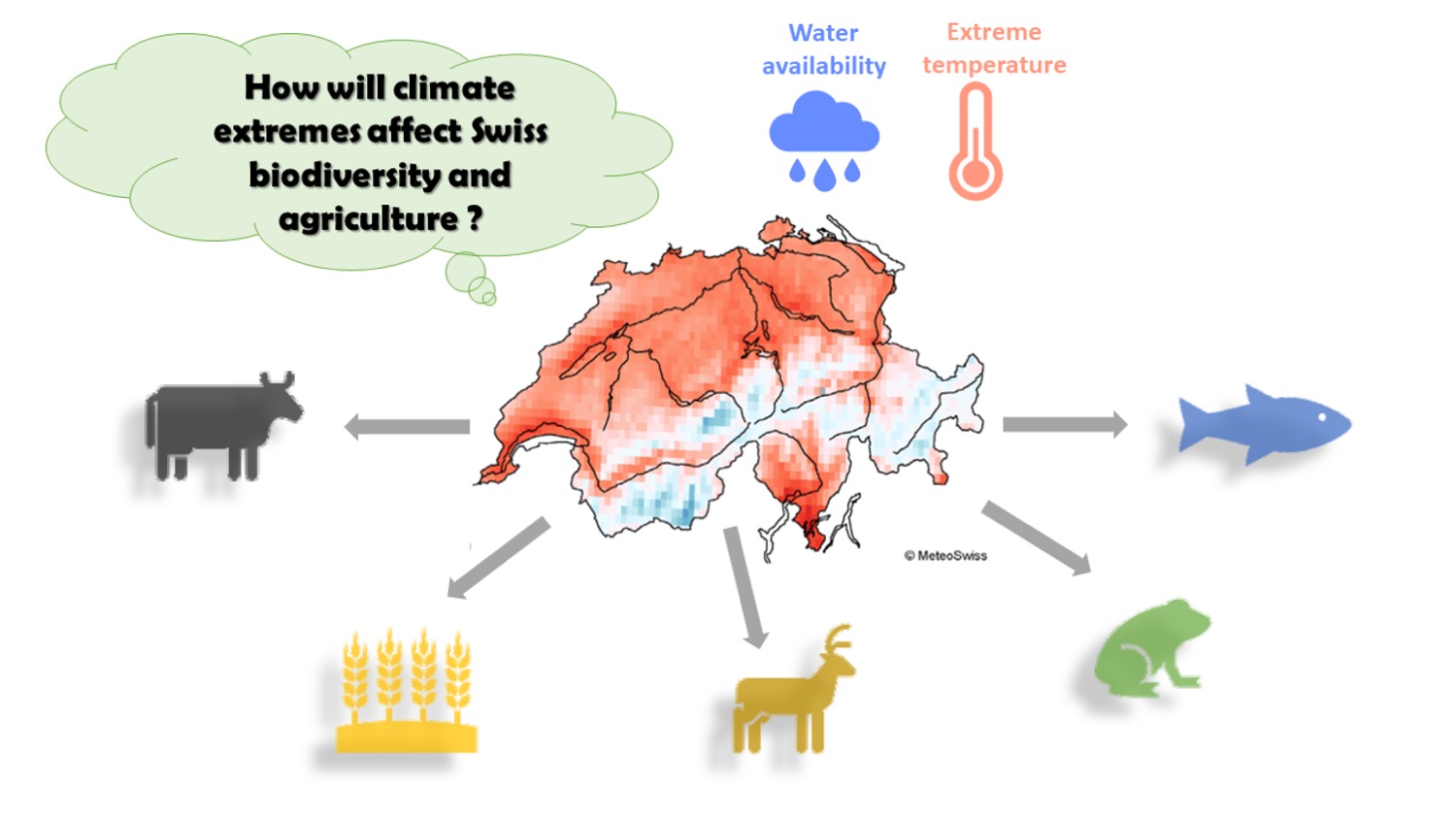Malefix
MaLeFiX - Machine Learning aided ForecastIng of drought related eXtremes
In the past decades, the earth’s average air temperature has risen considerably, and the global climate is predicted to change continuously over this century and beyond. The evaluated temperature will lead to more frequent and intense extreme events in the near future. In many mountainous parts of Europe, glaciers are a reliable water resource for summer discharge. However, we couldn’t rely on these relief measures in the long run because glaciers are melting at an accelerating rate. Most climate scenarios suggest, by the end of this century, we will face a situation that all glaciers in the European alps disappear.
The frequency of occurrences of heat waves and severe droughts will increase as the direct consequences of climate change. For example, people may still remember, in the year 2018, Switzerland experienced one of the most droughts of the recent decade. The lack of water led to severe crop failures and early discoloration of leaves on many common plant species. In addition to this, the water temperature of rivers reached a critical threshold for some aquatic species. As you can see, the occurrence of extreme weather events is posing a non-negligible threat to the biodiversity of our land.
One of the reasons that extreme temperature events and droughts have such a huge impact on species’ fitness and survival is because the fundamental niche of a species is shaped by a variety of environmental conditions. Ectotherms, including fish and amphibians, which make up more than 90 percent of all animals, are particularly vulnerable to climate warming. Their basic physiological functions of ectotherms like locomotion, growth and reproduction are strongly affected by ambient temperature, exposure to extreme temperature in habits can critically impact the fitness and even the death of animals. Unlike ectotherms, most endotherms are able to maintain a constant body temperature. But if the environmental temperature falls below or rises about an endotherm’s thermoneutral zone (TNZ), it has to adjust its metabolic rate or increase evaporative cooling, which harms its fitness over a prolonged period.
Agriculture in Switzerland is highly dependent on the climate. Extreme temperature and precipitation such as floods and drought, can harm crops and reduce yields. And drought can reduce the amount of quality forage available to grazing livestock, threaten pasture and feed supplies. In addition, with the increasing frequency of heatwaves, livestock suffers from heat stress and becomes more vulnerable to disease. Thus, research focus on the crossing of species’ thermal tolerance with future extreme weather events is required. This will allow stakeholders to be aware of the risks some weeks in advance and gain valuable time to mitigate loss. For instance, farmers can organize water transports for the cattle, increase irrigation for crops if they receive a warning a few weeks in advance.
In this project, we will collect and compile data about physiological constraints of different species from the literature to predict the risk of Swiss biodiversity from sub-seasonal forecasts of extreme weather events. Extremes in water availability and air temperature will be investigated depending on the characteristics of the species. We will use a physiological modeling approach to assess the impact of extreme temperatures on species fitness under climate change scenarios.
MaleFix is a subproject of WSL Research Program Extremes 2021 – 2024, which combines the knowledge of various research teams in WSL and practitioners from various sectors.
Contact information
Fabian Fopp
